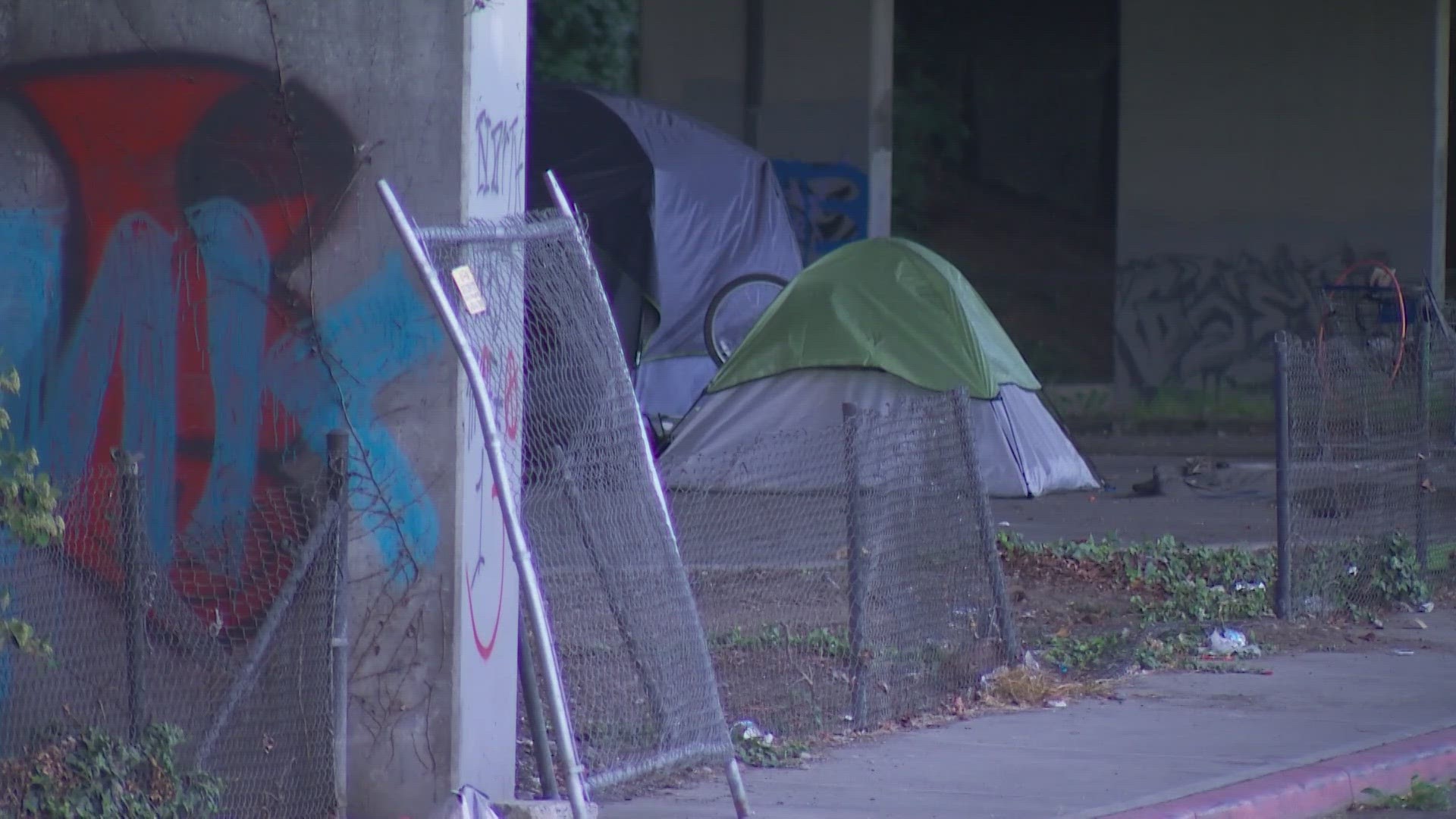TACOMA, Wash. — Rodney Richardson runs his homelessness outreach ministry, Sidewalk Rescue, out of his garage in Parkland. He collects food, socks, hygiene products, and sleeping bags, and drives around Tacoma to give them out to people on the streets.
After eight years, Richardson said he still remembers why he started.
“Just as a normal person just feeling someone else’s pain and suffering and going, hey, I can make a difference,” Richardson said.
Richardson’s ministry is part of the ongoing effort to solve homelessness in Tacoma, an issue that he said everyone from city officials to volunteers like himself is struggling with.
“It’s just an overwhelming situation, and I don’t know what the whole answer is to it,” Richardson said.
Last November, the City Council tried a new approach: a measure that banned camping anywhere within a ten-block radius of Tacoma’s service providers.
“We wanted to see fewer encampments,” said John Hines, Tacoma councilmember. “The goal was to try to address encampments in these areas who were offering shelter, and try to get more people to move into shelter and housing.”
Hines remembers hearing concerns that this type of ban would criminalize homelessness.
However, new data from the city’s Neighborhood and Community Services shows that no one has been arrested or fined for violating the ban. There has not been an increase in encampments in the buffer zones.
In the time since the camping ban was enacted, 62 encampments have been removed, and over a million pounds of debris have been thrown away. Hines claimed 694 individuals showed interest in services and 123 people have accepted shelter.
“A lot of work still left to do, but so far some of the early indications are showing, I think, good success,” Hines said.
But Richardson said there may be a problem.
He said the barriers in some shelters are too high, which keeps some people away.
As a result, he’s been running out of goods to give away sooner over the past few months because more people are on the streets with nowhere to go.
"There are more gates, more fence, more boulders, more stuff to keep people out, and pretty soon, where are they going to go?“ Richardson said. “There’s this massive overflow, and that’s why I say, I think that’s the reason why I’m seeing them building up on the street corners.”
Meanwhile, Hines said breaking up larger encampments into smaller groups makes outreach more effective.
Hines said $34 million have been invested to build more shelters to meet demand, and in the meantime, work is being done to make Tacoma’s current shelter as appealing as possible.
“I do hear people say there are people who don’t want what we’re offering, and my question is always, well what do they want?" Hines said. "And how do we get closer to that? And have a conversation on whether that’s something we want to offer or not."

